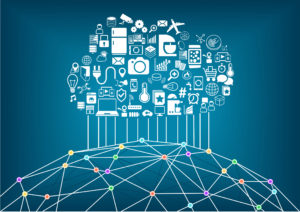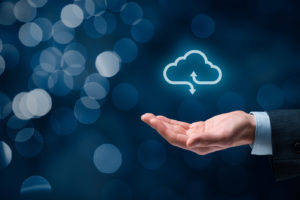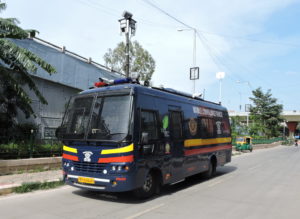Internet of Things and the Cloud Ecosystem
Internet of Things or IoT refers to an ecosystem of devices/things that are connected to each other over a network enabling communication among them. These connected devices are equipped with UIDs (Unique Identifiers). Once a device or gadget is represented digitally, it can be controlled or managed from anywhere. This helps to capture and transfer data from different places with minimal human intervention, increasing efficiency and improving decision making.
 Broadly, Internet of Things can be classified into Consumer IoT (CIOT)) and Industrial or Enterprise IoT (IIoT). The key difference between CIoT and IIoT mainly lies in the type of devices, application and the technologies that power them.
Broadly, Internet of Things can be classified into Consumer IoT (CIOT)) and Industrial or Enterprise IoT (IIoT). The key difference between CIoT and IIoT mainly lies in the type of devices, application and the technologies that power them.
Consumer IoT
Home Security and Smart Homes is one of the major areas where Consumer IoT is becoming very important. Monitoring intrusions, authorizing entries, controlling appliances remotely, all these are examples of Consumer IoT applications. Personal Healthcare is another area, which has benefitted extensively from Consumer Internet of Things. Personal wearable healthcare devices like fitness bands, track and monitor performance over time, providing information on progress and improvement. Blood pressure and heart rate bands powered by IoT can connect us directly to the healthcare system and provide timely assistance and alerts when needed. Other areas in the healthcare industry wherein IoT can play a crucial role include patient surveillance, care of the elderly and the disabled.
Industrial IoT
Enterprise and Industrial IoT applications can automate business processes that depend on contextual information provided by embedded devices such as machines, vehicles and other equipment. In recent years, Internet of Things has been gaining wide applicability, notably in Industrial and Enterprise environment as it provides a convenient mechanism to connect devices, people and processes. Organizations are looking at upgrading their existing resources to bring all their legacy systems under the IoT ecosystem. The key here is to ensure seamless interoperability, connectivity, scalability, and stability among various components in the ecosystem. Some of the areas where organizations can bring in easy, yet beneficial changes with IoT are,
- Asset tracking
- Resource Management
- Inventory management
- Job/Task distribution
Cloud ecosystem
The cloud ecosystem offers a platform to connect, collaborate and innovate. While IoT generates data from various physical systems in the ecosystem, cloud enables a seamless data flow and quick communication among these devices. It’s a complex system of connected devices that work together to create an efficient platform. The resources that can be delivered through cloud ecosystem include computing power, computing infrastructure (servers and storage), applications, business processes and more. Cloud infrastructure has the following characteristics, which differentiate it from similar distributed computing technologies:
- Scalability

- Automatic provisioning and de-provisioning of resources
- Cloud services accessible through APIs
- Billing and metering in a pay-per-use model
- Performance monitoring and measuring
- Security to safeguard critical data
How do IoT and the Cloud go hand in hand?
Internet of Things and cloud computing are complementary in nature. IoT benefits from the scalability, performance and pay-per-use model of cloud infrastructure. The cloud reduces the computational power needed by organizations and makes data processing less energy-intensive. These facilitate business analytics and collaborative capabilities which help organizations in rapid development of new products and services. The benefits of combining IoT and the cloud are:
- Quicker deployment of data and thus, quicker decision making
- Easy navigation through data
- Flexible payment options
- Decreased costs on hardware and software
- High degree of scalability
Conclusion
According to SoftBank, by 2025 about 1.0 trillion devices are expected to be connected over Internet of Things. The rapid development in the field of IoT technology and the fast-paced business environment has made IoT an inevitable choice for organizations. IoT is bridging the gap between physical systems and digital world, hence increasing productivity in both consumer and industrial environment.
IoT service providers assist organizations to transform their infrastructure by providing IoT sensor nodes and IoT Gateway Devices, integrating the communication Frameworks and protocols and providing the Applications [Web/Cloud Applications and Client Applications], to bridge the legacy systems to the IoT infrastructure. IoT Service Providers identify congestions in the enterprise functioning and help the organization to achieve increased efficiency by enabling systematic and intelligent tracking, monitoring, communication and decision-making system. Mistral, as a technology service provider can help you realize your IoT strategy by providing IoT Device Designs and IoT Gateway Designs based on powerful processors from Intel, Texas Instruments, Qualcomm, NXP/Freescale and open source platforms. We can help you through IoT Protocol Development, Web/Cloud/PC Applications integrating with the legacy system to provide a seamless IoT enabled solution for enterprise and industrial automation.




